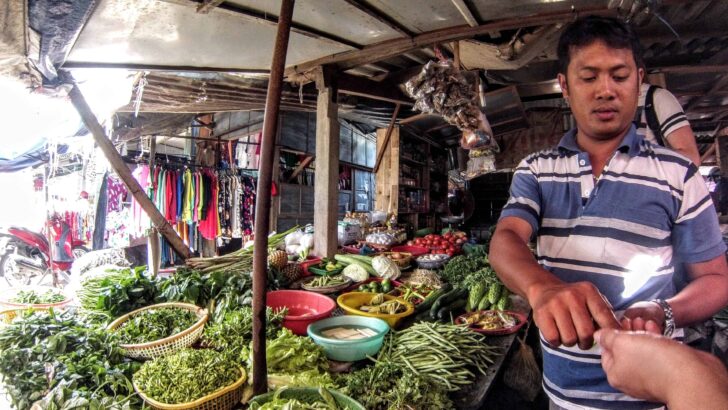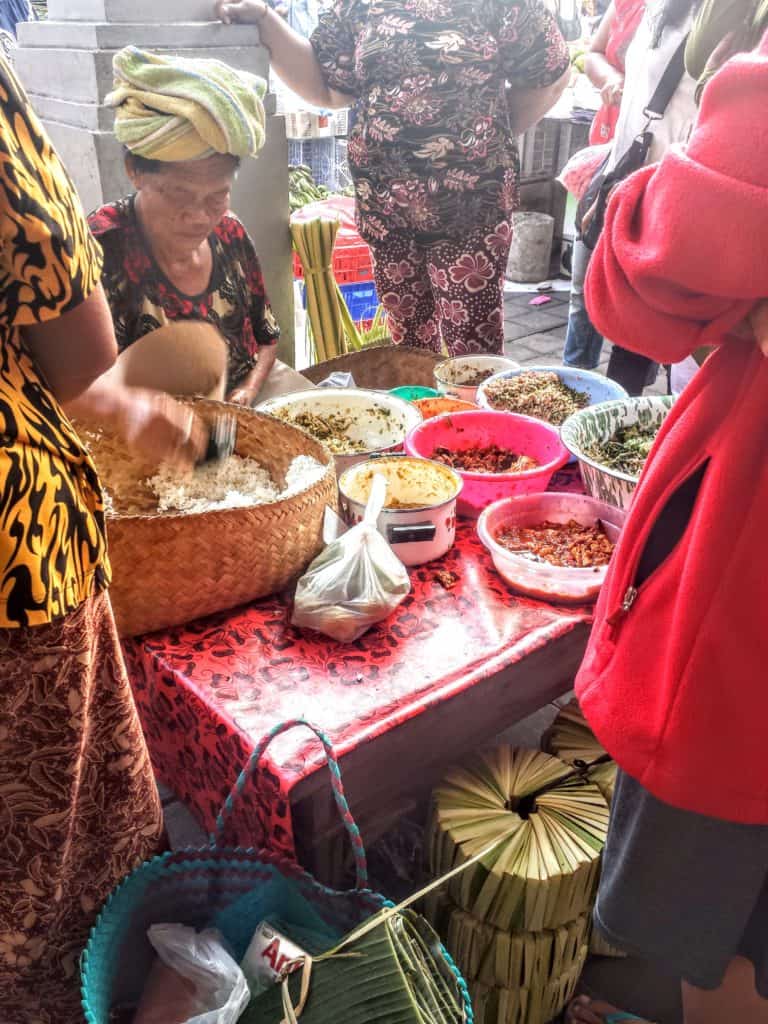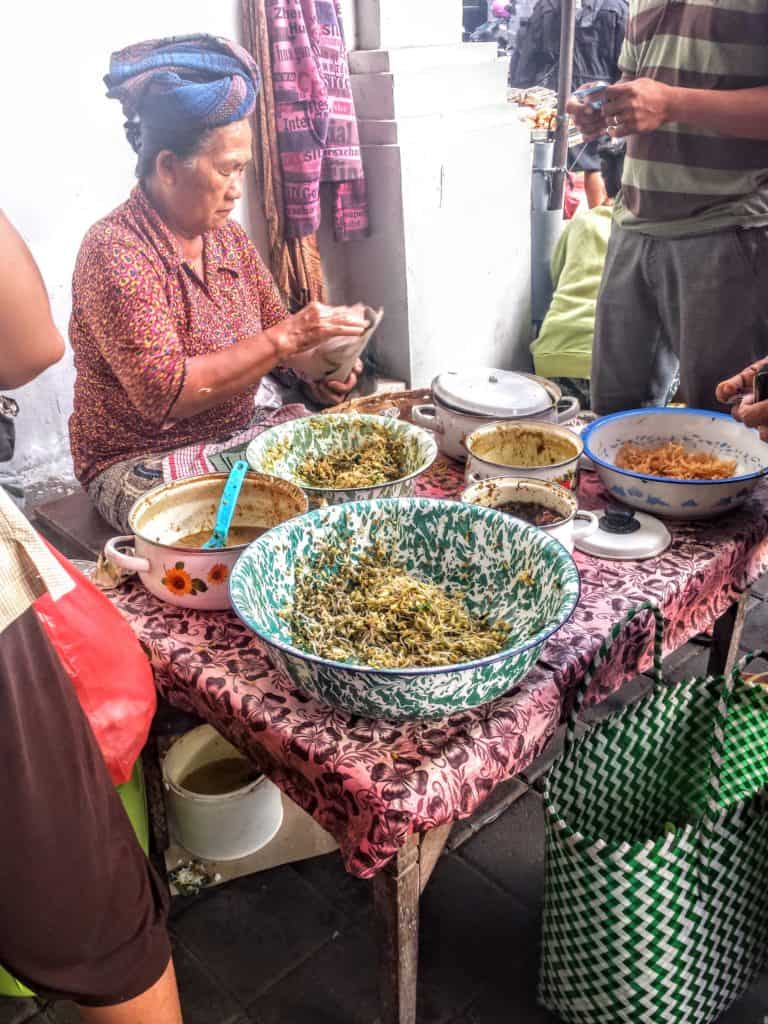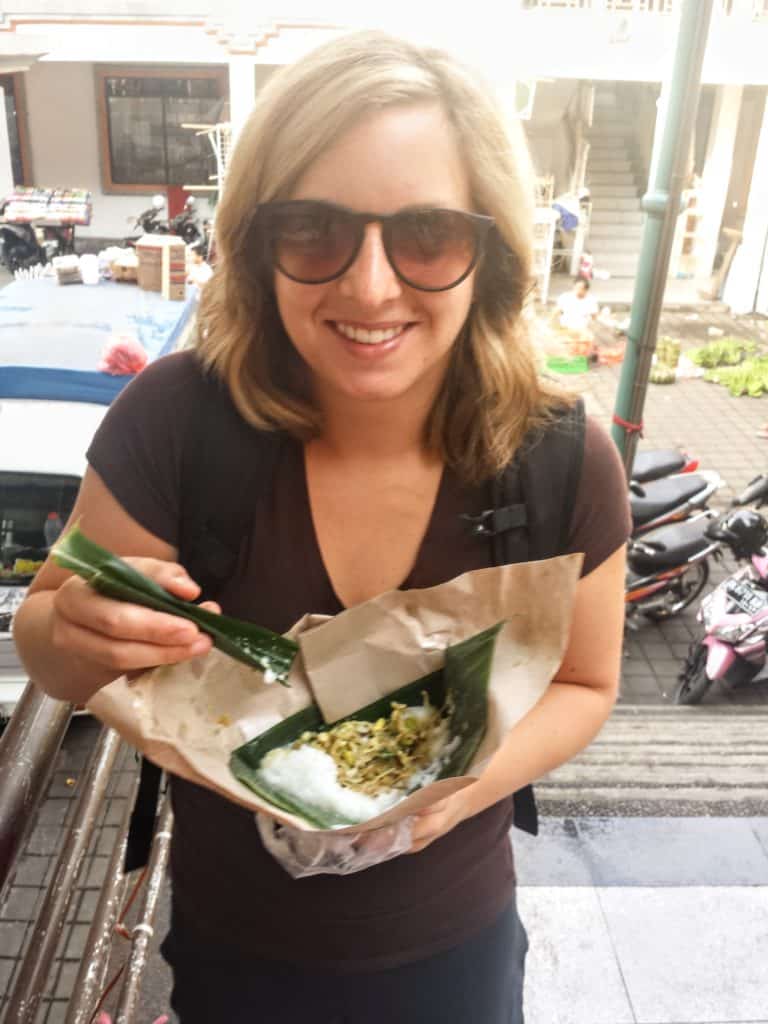There’s a big problem we’re facing in the world: overtourism, drive-by tourism and the Instagram effect. Before we get too far and more places experience the damaging consequences of this travel pattern, we should start to think about responsible travel.
The number of people travelling internationally continues to increase exponentially. Engaging in purposeful ways to be a responsible traveler will only become more important as the years go on.
Are counting the number of countries you’ve visited more important than what you learn, experience and taste about a new destination?
The reality is, bragging about the the number of countries visited and blowing up our Instagram feeds are not responsible travel practices.
And not only that, but as many places are now closing their doors in an effort to reclaim the land, many destinations are seeing flocks of tourists before they close. The phenomenon of ‘last chance tourism’ is making the problem worse.

This post contains some affiliate links. This means I may make a commission if you make a purchase. There’s no extra cost to you, and I only recommend products & services I use, love and have thoroughly researched.
What’s Happening in the World?
Do you ever daydream about waking up in an Eco lodge in the middle of a rice paddy in Bali? Images of a romantic gondola ride through the canals of Venice have you searching for flight deals?
Distracted by thoughts of a dreamy bicycle ride through the tulip markets of Amsterdam?

Unfortunately, there’s some bad news. These reveries and experiences may eventually be a thing of the past. With a growing world population (and affluent middle class), travel becoming more accessible than ever before and the Instagram effect, travel is no longer what it once was.
Beyond Overtourism
Overtourism is one of the most popular buzzwords in the 2019 travel industry. Hundreds of articles and blog posts have been published in the last year about this huge problem. National Geographic explains that the number of international travelers worldwide is on track to reach 3 billion people by 2050.

But what a lot of these travel posts miss is that overtourism is not just about throngs of people over saturating cities. The World Tourism Organization argues that overtourism is less about the number of tourists and more about the capacity to manage them.
For example, many people will tell you that the Blue Lagoon in Iceland is succumbing to overtourism. While it’s always busy, in reality, this is actually a great example of a well-managed tourism experience. The hot spring is largely artificial, close to the airport and charges an admission fee.
As the Blue Lagoon was built primarily with the intention of serving tourists, it’s not putting a strain on similar hot springs found in the natural environment.
Being within close proximity to the international airport encourages tourists to visit this location instead of seeking out others that may not be able to accommodate a higher number of people. And the strategic price point influences visitors to visit this attraction over others; expensive enough to demonstrate value, but not so expensive that it deters visitors.
You Might Also Like: How to Tackle Pre-Travel Anxiety and Make the Most Out of Your Trip
Why Overtourism Is A Problem
Overtourism becomes a problem when the destination can no longer manage the amount of visitors its seeing. There are many negative results that occur because of this, for both locals and visitors.
In popular cities, rent starts to skyrocket as landlords transform their properties into short term vacation rentals instead of local housing. With the rise of services like Airbnb, property owners around the world have quickly realized that multiple short term stays in a month are more lucrative than a local’s rent cheque.
Not only is this driving locals out of their hometowns, it’s slowly dissolving communities and cultures, which are some of the experiences travelers specifically seek out in a new city.
This has created adverse situations for tourists. In cities like Barcelona and Athens, locals have started to protest in front of popular tourist attractions telling visitors that they should go home and that they’re not welcome.

In addition to these types of situations being negative for the visitor, crowds are a huge problem. Have you ever been to your dream destination only to find out it’s just littered with other tourists?
Images of the Neuschwanstein Castle in Germany have been popular on social media in the last 5 years. Who wouldn’t want to visit the castle because of these stunning, iconic and fairy tale images.
But did you know that crowds of people like this will be your true experience if you visit in the popular summer months?

You Might Also Like: Exploring Germany’s Cutest and Real Life Fairy Tale Town
How Instagram is Ruining Travel
Our ‘gram feeds are flooded with travel influencers who set up staged shots. They travel with professional camera gear, have experienced photo editing skills and work with destination marketing organizations to get special access before the crowds arrive.
There are travel influencers that earn six figures from the amazing images they curate from all over the world. Their images are breathtaking. But this doesn’t always translate to reality.
There are tons of examples of destinations that don’t live up to the instagram feeds. And the reality of overtourism isn’t limited to major cities.
It’s even negatively impacting small and family run businesses. For example, a family-run sunflower farm in Ontario, Canada had to cease operations after they couldn’t handle the hordes of visitors who flocked to their farm after an Instagram image went viral.

Tourism Is Still A Good Thing
Tourism and travel are still important and necessary. The World Travel & Tourism Council estimated that tourism spending exceeded over $7 trillion in 2017, making it one of the world’s largest industries. Tourism will continue to be a significant economic driver and many economies still rely heavily on tourist traffic.
Beyond the economic impacts, tourism is important for sharing, learning and engaging with other cultures. And many locals and residents can benefit from tourism, such as employment and infrastructure enhancements made to the community in an effort to attract more visitors.
So, how do you still travel, avoid drive-by tourism, combat overtourism and travel more responsibly?
What Does It Mean To Be A Responsible Traveler?
Responsible tourism is all about engaging in tourism or travel in a way that benefits the places you visit.
In a nutshell, being a responsible traveler means things like:
Being purposeful about spending your dollars in small local economies.
Researching places that aren’t overrun by crowds and could use your support.
Reducing your carbon footprint by choosing more environmentally friendly modes of transportation.
Finding ways to volunteer on your holiday.
Visiting in the off season and extending the length of your stay.
Spending more time meeting locals and less time Instagramming them.
Read Next: The Slow Travel Movement and Why You Should Embrace It

If this has piqued your interest, below you’ll find examples and ideas about how you can start being a responsible traveler on your next trip.
How To Be A Responsible Traveler
Seek Out Responsible Accommodations
Many destinations and tourist attractions have started to limit the number of tourists per day and per year for some time now, but we’re also starting to see more and more places go even further than that.
For example, in Bali, guests are no longer allowed to use phones or electrical devices around the Ayana Resort and Spa’s River Pool between 9am and 5pm.

Mexico
In Mexico, the Grand Velas Riviera Nayarit offers a ‘digital detox’ for travelers who wish to leave their cellphones in locked boxes for the duration of a portion of their stay. It even comes with perks, like exchanging your phone for the week in exchange for free activities like snorkeling.
If you’re headed to this side of Mexico, Bucerías is a great alternative destination to Puerto Vallarta and Nuevo Vallarta. With Puerto Vallarta being extremely busy and now mostly overrun by cruise ships, many people are flocking to Neuvo.
But a stay in Nuevo means you’re largely supporting mega commercial properties. Only 10 minutes north is the unassuming town of Bucerías that will be a pleasant surprise if you’re looking for some quieter beaches, a sleepy town atmosphere and tons of locally-owned businesses.

You might also like: A Complete Destination Guide to Huatulco | One of Mexico’s Hidden Gems
Sweden
In Sweden, you can even get up to a free night’s stay at this hotel. The hotel offers an incentive that the less screen time you use, the less you pay. For an entire night of ignoring your phone you can swing a free night.
Spain
If you’re travelling to Spain, consider the Ilunion Barcelona or the Ilunion Suites Madrid. This chain of hotels provides excellent employment to people with disabilities. In some cases, over 70% of their hotel staff are people with disabilities.
A great example of a tourism business supporting the local community.

Accommodation Services That Connect You With Locals
Services like Trusted House Sitters are a great way to not only save money while travelling, but help out someone around the world by house sitting and taking care of their pet while they’re away. It’s a great way to discover new places outside of major hubs, meet locals and enjoy a much more authentic experience.
Homestay is a service in which you bunk with a local. By using an accommodation service like this, you’re not pushing out locals, but staying with them in their home and creating opportunities to develop lifelong friendships. It’s a great way to meet and interact with locals who might share tips about their city’s local hidden gems.
Couchsurfing is a worldwide service which connects travelers with hosts for a free night’s stay at their home. It’s a win-win for the travel community, as travelers can save a few dollars and have genuine interactions with locals and in the places they’re visiting. Local hosts can share their favorite places or neighborhoods that may not be saturated with tourists yet.
And while I reference earlier in this post that sites like Airbnb have enabled mass tourism and pushed locals out of their communities, there are ways you can use the platform and others in a more responsible way. You can book homes that are in less-visited neighborhoods or choose to rent a private room knowing you’re helping a local family with additional income.
Soon, a new socially responsible accommodation platform is making its way to a city near you. Fairbnb will aim to offer an alternative to unregulated home-sharing platforms that are destroying communities around the world.
We want to offer a community-centred alternative that prioritizes people over profit and facilitates authentic, sustainable and intimate travel experiences
Fairbnb
Utilize Tours and Services Run By Locals
Seek out locally created and community oriented guided services. Triponyu.com is an Indonesian site which connects you to local guides. All tours were developed by locals and they keep over 90% of the revenues from each tour.
Look for free walking tours in cities you visit. When I was in Ho Chi Minh, I took part in a free tour put on by local university students. With Saigon Walking Tours the students volunteer their time in exchange for practicing English.

Consider a Staycation
This could mean anything from exploring your own city or your own country. Too often we get swept up in amazing places around the world without exploring our own backyard first. A great way to get started is by googling your city (or country) + staycation.
You’d be surprised by great things you can find in your home country. For my fellow Canadians, did you know there’s a cottage you can rent at a Tuscany-inspired vineyard in Ontario?
Want more staycation ideas? Check out: 15 Unique Staycations in Canada
Visit Alternative Destinations
The good news is that planet Earth is massive! There are so many options for responsible tourism destinations. Look for alternative destinations to popular tourist spots.
Related reading: 8 Places to Visit When Banff is Too Busy
Easy Things You Can Do Right Now and On Your Next Trip
While choosing your responsible accommodations or responsible travel destinations are large decisions to make, you can make small changes starting with the next trip you take.
Reduce Your Plastic Usage
The obvious suggestions here are things like ditching single use plastic water bottles and switching to a reusable bottle. No to plastic straws.
But think about everything you use on your trip. Soap is a big one. Not only are soap and body wash products awful for the amount of plastic packaging they use, some contains ingredients harmful to the environment.
I like to use natural soap bars that have limited packaging. What’s more is that you can also get your hands on shampoo bars! These are not only great for reducing your plastic footprint, but as they’re not liquid, they’re great for carry on luggage.
For more great ideas about how to reduce your waste, fellow travel blogger Emma from Bonjour Sunset has 10 tips to be a more eco-conscious traveler.
Use Menstrual Cups
Using menstrual cups are a great way to reduce your overall waste. Also, menstrual cups are perfect for travelling. Not only will you save money from not having to buy tampons, you can leave them in for much longer. Also, if you’re a westerner, sometimes it’s hard to find the types of tampons you’re used to on the other side of the world. If you’re unsure about them, I recommend this one for beginners.
Shop and Eat at Farmer’s Markets & Equivalent
Shop at farmer’s markets and eat from local food stands.

I remember waking up at 5:30am on my vacation in Bali to hit the Ubud market by 6:30am. By 7am I was so hungry for breakfast and the only food around was a wonderful Balinese lady creating amazing meals from rice, beans, homemade sauces and a whole bunch of stuff I didn’t recognize.
The kicker? She was making it with her bare hands. As this was one of my first international trips I was a little weary of this. However, my savvy best friend who had taken many international trips before me shared a piece of advice:
If it’s busy and there are locals lining up for it, it’s probably very safe to eat. When locals are lining up, it means it’s good and likely a good price! Also, at a busy street food stand you don’t have to worry about food sitting out for very long, because it doesn’t last!
Hire Someone Local
You can hire someone local by checking out Fiverr if you need help with trip itineraries or travel planning for super low cost. Tour guides available that are super custom.
Learn the Language
Make an effort to speak the language. Remember that you’re a visitor and a guest in the country you’re visiting. Making an effort to speak the language will do wonders for the interactions with locals you’ll have, the way you’ll be treated and being an ambassador for your own country.
iTalki is one of the best online learning platforms. It’s custom, convenient and available as an app, so you can use it anywhere.
DuoLingo is another app-based learning platform. It uses gamification to entice users to keep going!
Your Challenge!
My challenge to you is to think about ways you can engage in responsible travel, starting with the very next trip you’re taking! Whether it’s researching an alternative destination or challenging yourself to strike up a conversation with a local, just try something!








